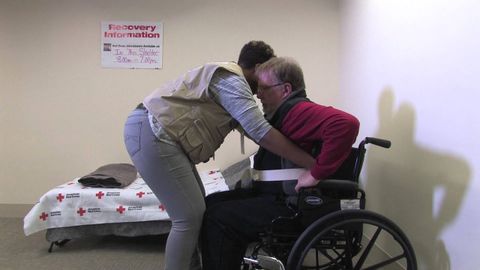ケアアシスタント研修、モジュール2:移乗介助 (Care Assistant Training, Module 2: Transfer Assistance)
Horace が 2024 年 08 月 08 日 に投稿  この条件に一致する単語はありません
この条件に一致する単語はありませんUS /ˌsɪtʃuˈeʃən/
・
UK /ˌsɪtʃuˈeɪʃn/
US /ˈslaɪtli/
・
UK /ˈslaɪtli/
- adj.異性愛者;異性愛の;正直で直接的;真っ直ぐな;きちんとした
- adv.率直に;まっすぐに;すぐに
- n.異性愛者
- v.t./i.まっすぐにする
US /dɪˈtɚmɪn/
・
UK /dɪ'tɜ:mɪn/
エネルギーを使用
すべての単語を解除
発音・解説・フィルター機能を解除
